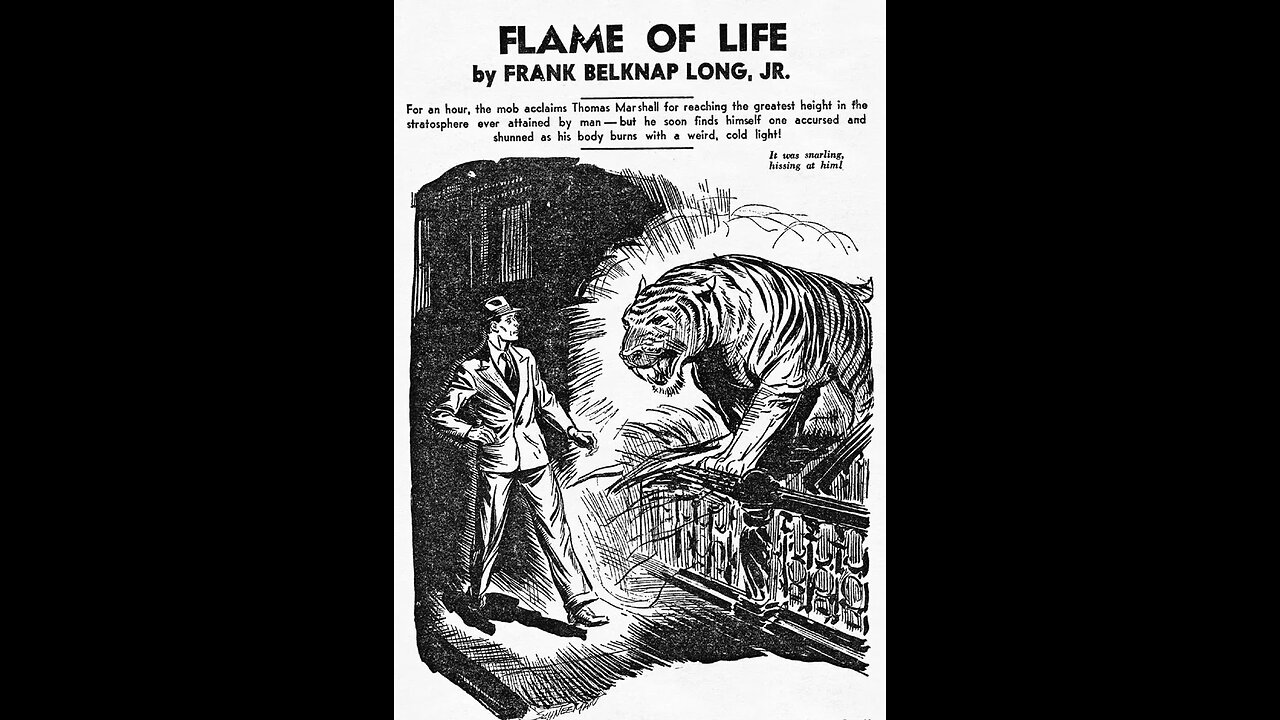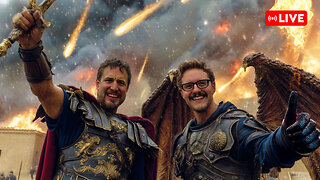Premium Only Content

"Flame of Life" by Frank Belknap Long
Published in 1939
53,000 miles = 85,300 kilometers
The moon is 238,900 miles, so we're 22% of the way to the moon! The ionosphere covers the range of 30 to 600 miles. The word 'ionosphere' was invented in 1926, and its existence was confirmed in 1927, including its height and density. So by 1939, this was all old hat, yet for some reason Long gets it very wrong here. Weird.
The Mauve Decade: the 1890s. So-called because of how popular the use of the color mauve had become in fashionable clothing.
Georgian architecture covers the period from 1714 to 1830, names after the first four King Georges.
periwig: a wig, especially a highly styled one, which in the Georgian period would be a white powdered wig. This went out of fashion in the mid-18th century and all but disappeared by the start of the 19th century.
frog: in the context of clothing, an ornamental braiding used to fasten the front of a garment and consist of a button on one side, with a loop to pass through on the other.
Dr. Crille: this appears to be a made-up person? Given the absurdity of the theory proposed, I can believe he wouldn't want to attribute it to a real person.
Einstein, on the other hand, we all know who that is. But Eddington and De Sitter? Hmmm...
Eddington: Sir Arthur Stanley Eddington, an English astronomer, physicist, and mathematician active in the early to mid 20th century. We get the Eddington limit from him, the natural limit to the luminosity of stars. He speculated on the existence of fusion in stars.
De Sitter: Willem de Sitter, a Dutch astronomer, physicist, and mathematician of the late 19th and early 20th century. He co-authored a paper with Einstein dealing with the curvature of the universe. We get the ideas of de Sitter space and the de Sitter universe from him.
Long uses British spellings in the text rather than American ones, like kerb instead of curb, or tyre instead of tire. We can see this was written right before WW2, but I would not have guessed Americans were still using British spellings at that point. Hmmm...
The picture used is an illustration by Charles Schneeman for the story as it appears in "Science Fiction", October 1939.
-
 1:43:07
1:43:07
Tucker Carlson
1 day agoBishop Barron on the New Pope, the Foolishness of Atheism, and Why Young Men Are Turning to Christ
190K199 -
 11:09
11:09
Warren Smith - Secret Scholar Society
8 months ago $0.70 earnedThis Interview Changed How I See the World
11.4K8 -
 3:24:07
3:24:07
Barry Cunningham
5 hours agoJD Vance And Marco Rubio Speak at American Compass Fifth Anniversary Gala | And More News!
50.1K21 -
 2:52:45
2:52:45
TimcastIRL
4 hours agoTrump Admin ARRESTS Boulder Terrorists ENTIRE FAMILY, Preps Deportations | Timcast IRL
157K88 -
 2:40:48
2:40:48
RiftTV/Slightly Offensive
6 hours agoBig, Beautiful SCAM? Elon FLIPS on Trump for WASTEFUL Bill | The Rift | Guests: Ed Szall + Matt Skow
42.8K10 -
 LIVE
LIVE
SpartakusLIVE
5 hours agoSpecialist TOWER OF POWER || Duos w/ Rallied
535 watching -
 3:24
3:24
Glenn Greenwald
4 hours agoPREVIEW: Sen. Rand Paul Interview Exclusively on Locals
84.8K49 -
 LIVE
LIVE
VapinGamers
3 hours ago $0.05 earned⚔ 🔥 Blades of Fire - Game Review and Playthru - !game !rumbot #sponsored
332 watching -
 LIVE
LIVE
ZWOGs
8 hours ago🔴LIVE IN 1440p! - Max Payne 3, Halo Infinite, Marvel Rivals, Splitgate 2, & Maybe Helldivers 2 - Come Hang Out!
40 watching -
 1:14:00
1:14:00
The Daily Signal
4 hours ago🚨LIVE: Democrats Champion Illegals Amid MORE ICE Arrests
42.2K1